Exile
oil on canvas, 140×100 cm
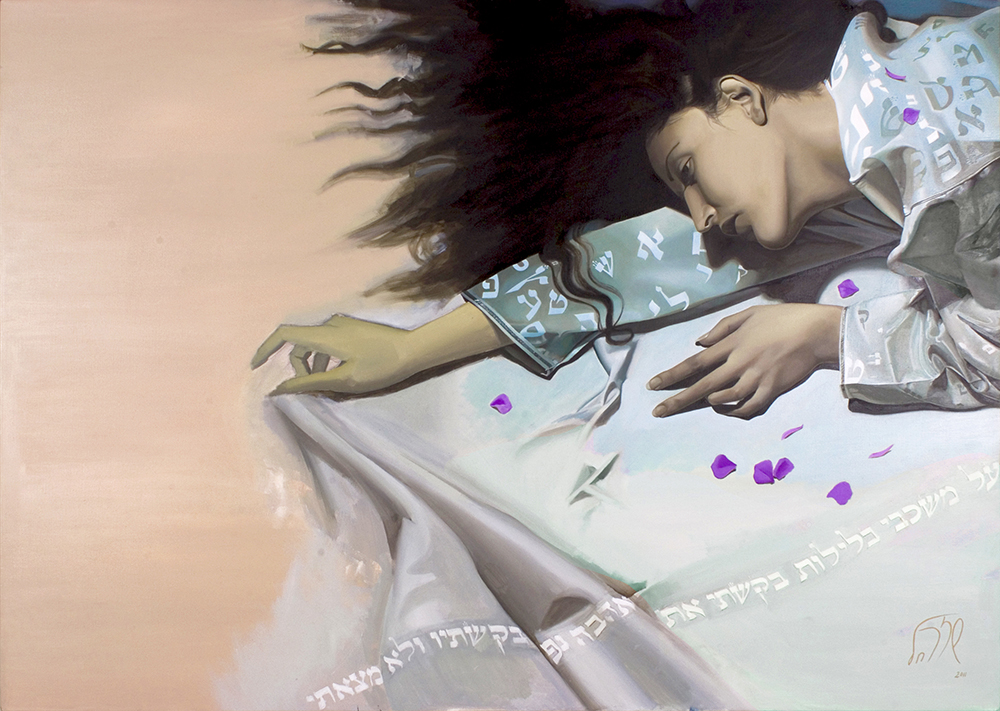
Exile
Shekinah
oil on canvas, 70×50 cm
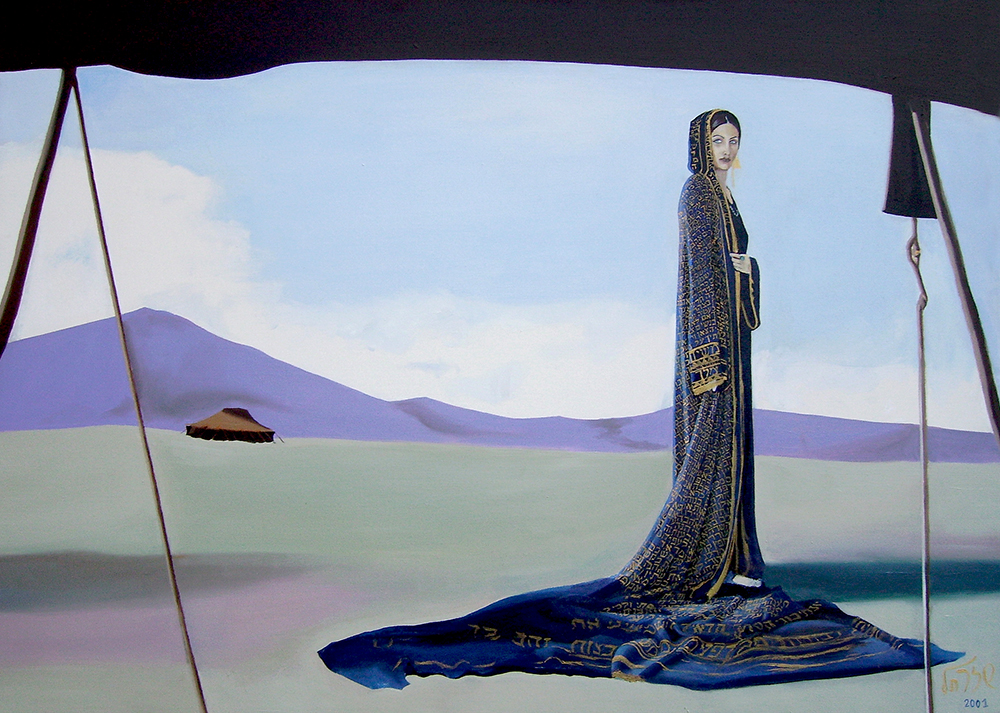
Shekinah
“The King’s daughter is all glorious within; Her clothing is interwoven with gold. ” (Psalm 45, 14)
The word Shekinah in the kaballistics writings means the presence of G-D in this world, a symbol of the community of Israel which is seen as his bride.
From the inside of the tent we see the eyes of the bridegroom who meets the eyes of the bride. The bride, who is the people of Israel, is in the desert of exile; the dress that makes her desirable and at the same time hides her from the eyes of the Beloved, is the Torah.
The Torah is a clothing interwoven with gold (we see in the picture the text of the Song of Songs microscopically painted in gold on the clothing of the Shekinah), but what is more beautiful, the dress or the body that it conceals? The body is more beautiful than the dress who hides it, so the people of Israel is more beautiful than the dress, the Torah, that is. But as the dress hides the body, the body hides the soul,which is more beautiful than the body. So the Divine Presence is the soul that hides behind the body of the people of Israel … one inside the other.
Zohar, beyond the veil
oil on canvas, 155×90 cm
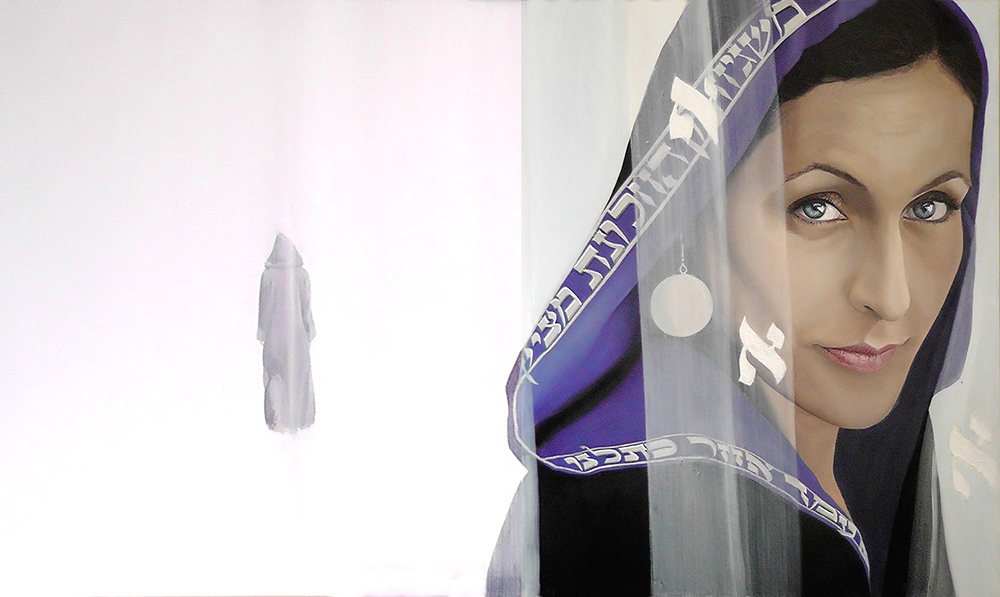
Zohar, beyond the veil
The layers of the wall
oil on canvas, 70×50 cm
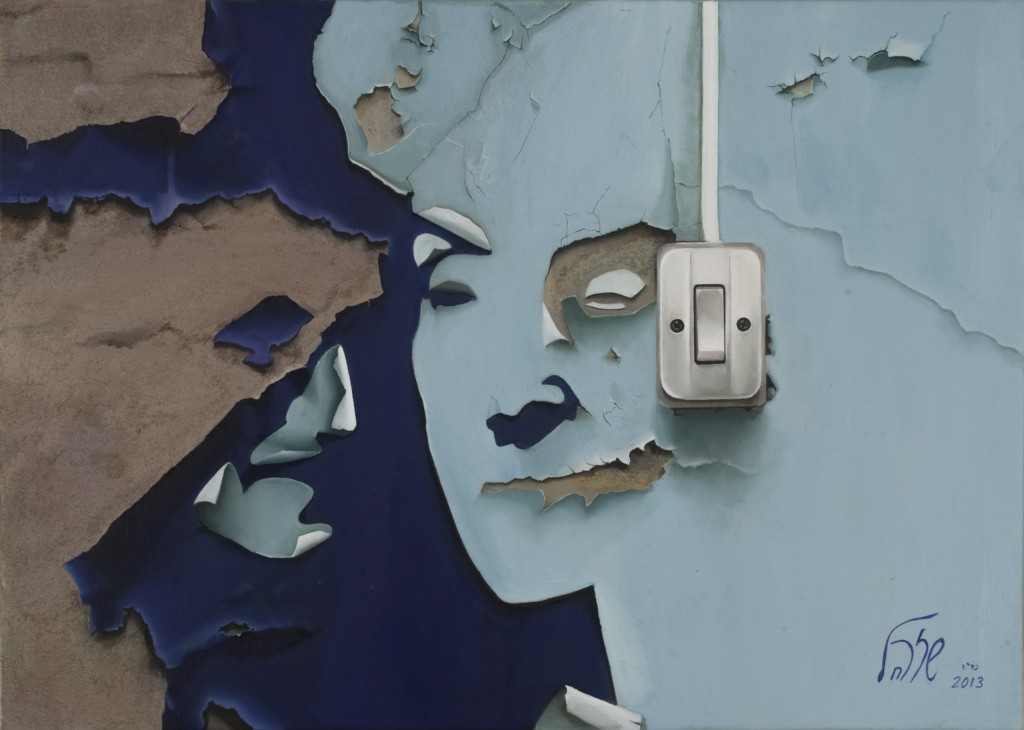
The layers of the wall
Hatikvàh (the Hope)
acrylic on canvas, 300×190 cm
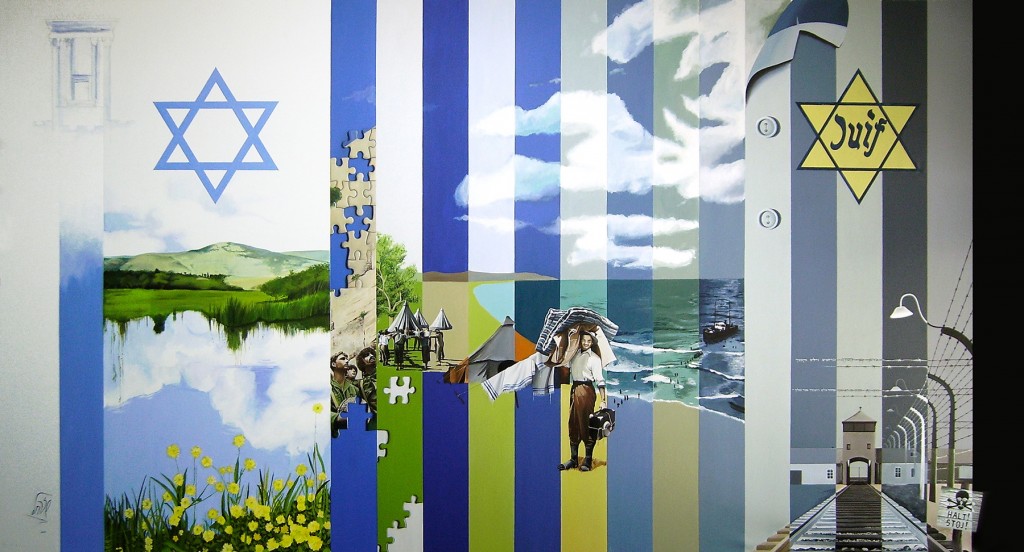
Hatikvàh
Commissioned by an Israeli kippòt srugòt yeshiva (religious school that imparts the study of Torah and a method of education based on the teachings of Rabbi Kook), thislarge canvas will be teaching work that synthesizes the hope of religious Zionism: hence the name “Hatikva”, as the Israeli national anthem in Hebrew means “hope.”
The thought of Rav Kook has no political connotation, but it is completely based on the principles of the Kabbalah, and in particular on the basic concepts of lurian Kabballah, and it is for this reason that his writings are difficult to understand for those who do not have a deep knowledge of Kabbalah. The work strives to translate these difficult concepts in simple language and immediate because it is aimed at an audience of young students.
We offer readers a guide to a thorough reading of:
The painting is included between two visual brackets: from black to white, from bottom to top, from the Shoah to the third Temple in Jerusalem.
Alef
oil on canvas, 50×80 cm
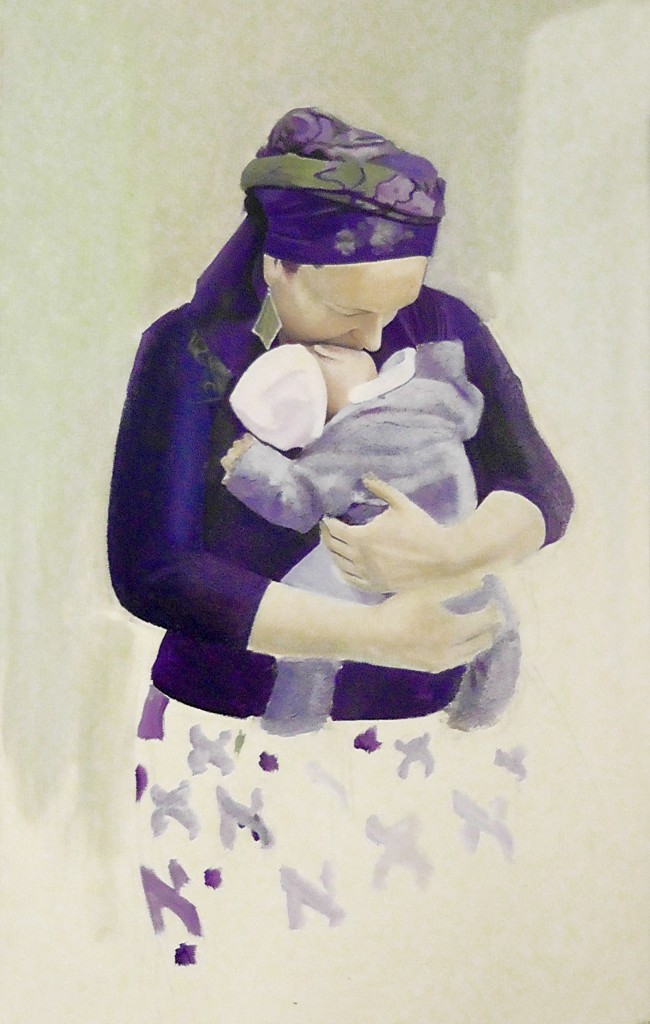
Shir haShirim (Song of Songs)
oil on canvas, 70×50 cm
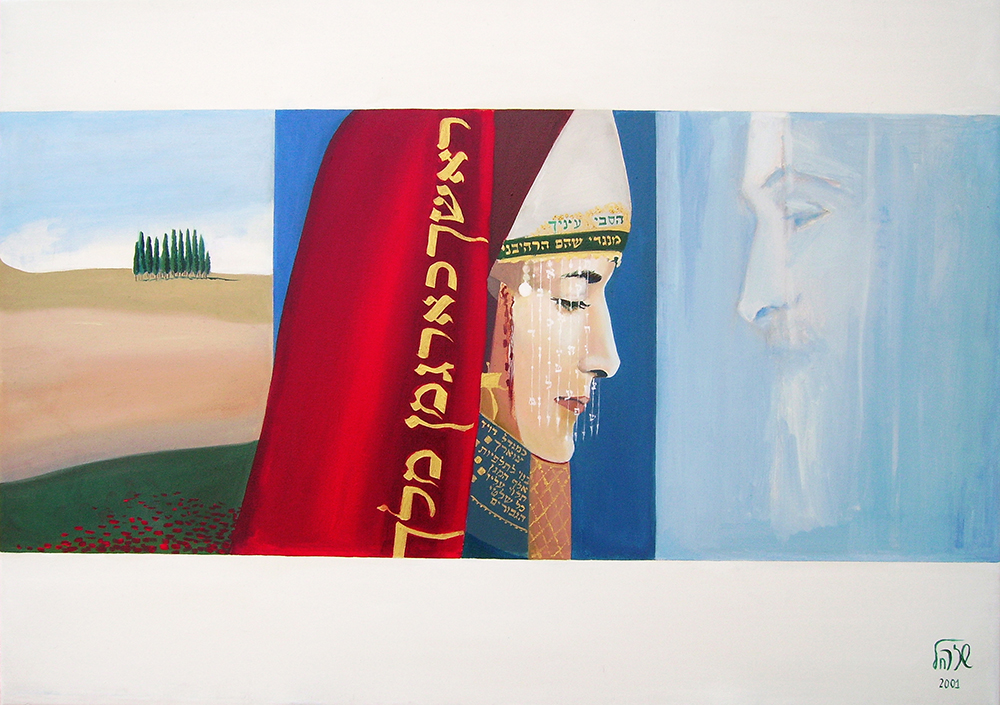
Shir haShirim (Song of Songs)







